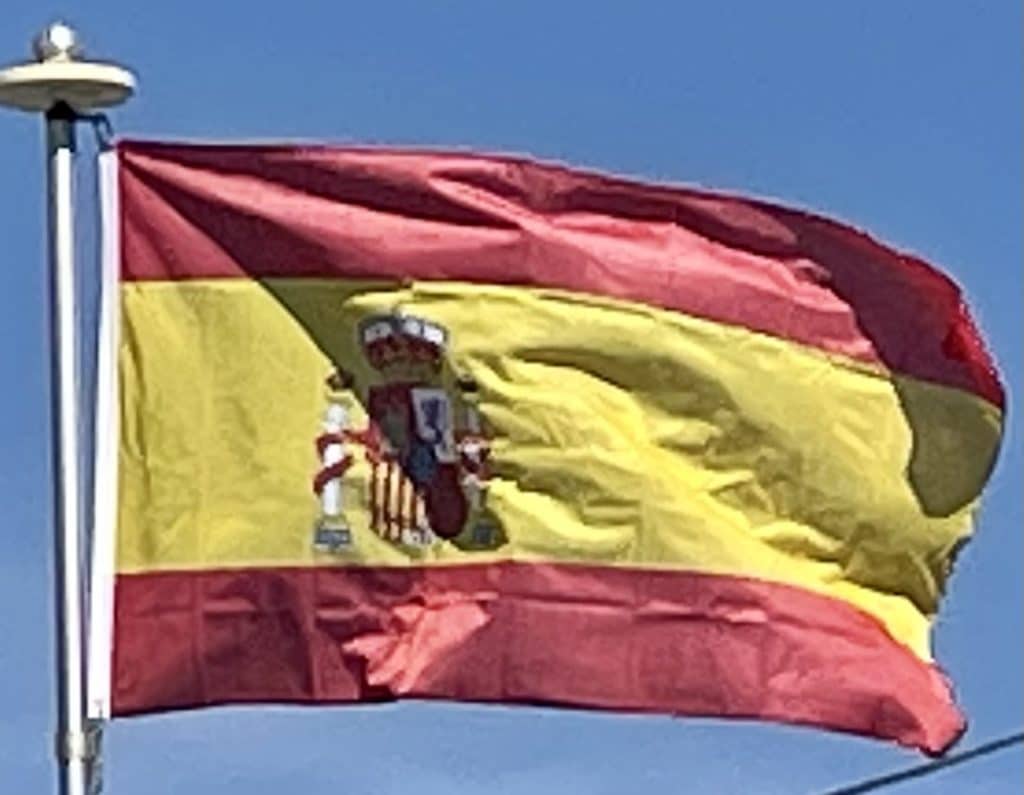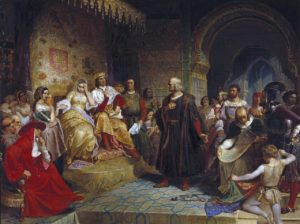
The unification of the crowns of Aragon and Castile by the marriage of their sovereigns laid the basis for modern Spain and the Spanish Empire, although each kingdom of Spain remained a separate country socially, politically, legally, and in currency and language.
Two big revolts broke out during the early reign of the Habsburg emperor, Charles V: the Revolt of the Comuneros in the Crown of Castile and Revolt of the Brotherhoods in the Crown of Aragon.
Habsburg Spain was one of the leading world powers throughout the 16th century and most of the 17th century, a position reinforced by trade and wealth from colonial possessions and became the world’s leading maritime power. It reached its apogee during the reigns of the first two Spanish Habsburgs—Charles I (1516–1556) and Philip II (1556–1598). This period saw the Italian Wars, the Schmalkaldic War, the Dutch Revolt, the War of the Portuguese Succession, clashes with the Ottomans, intervention in the French Wars of Religion and the Anglo-Spanish War.
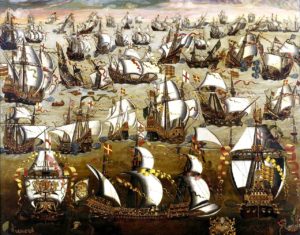
Through exploration and conquest or royal marriage alliances and inheritance, the Spanish Empire expanded to include vast areas in the Americas, islands in the Asia-Pacific area, areas of Italy, cities in Northern Africa, as well as parts of what are now France, Germany, Belgium, Luxembourg, and the Netherlands. It was the first empire on which it was said that the sun never set. This was an Age of Discovery, with daring explorations by sea and by land, the opening-up of new trade routes across oceans, conquests and the beginnings of European colonialism.
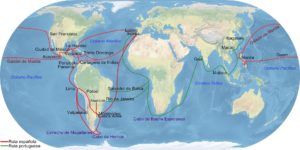
Spanish explorers brought back precious metals, spices, luxuries, and previously unknown plants, and played a leading part in transforming the European understanding of the globe. The cultural efflorescence witnessed during this period is now referred to as the Spanish Golden Age. The rise of humanism, the Counter-Reformation and new geographical discoveries and conquests raised issues that were addressed by the intellectual movement now known as the School of Salamanca, which developed the first modern theories of what are now known as international law and human rights. Juan Luis Vives was another prominent humanist during this period.
Spain’s 16th-century maritime supremacy was demonstrated by the victory over the Ottomans at Lepanto in 1571, and then after the setback of the Spanish Armada in 1588, in a series of victories against England in the Anglo-Spanish War of 1585–1604. However, during the middle decades of the 17th century Spain’s maritime power went into a long decline with mounting defeats against the United Provinces and then England; that by the 1660s it was struggling grimly to defend its overseas possessions from pirates and privateers.
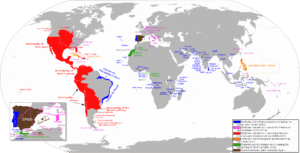
The Protestant Reformation dragged the kingdom ever more deeply into the mire of religiously charged wars. The result was a country forced into ever-expanding military efforts across Europe and in the Mediterranean. By the middle decades of a war- and plague-ridden 17th-century Europe, the Spanish Habsburgs had enmeshed the country in continent-wide religious-political conflicts. These conflicts drained it of resources and undermined the economy generally. Spain managed to hold on to most of the scattered Habsburg empire, and help the imperial forces of the Holy Roman Empire reverse a large part of the advances made by Protestant forces, but it was finally forced to recognize the separation of Portugal and the United Provinces, and eventually suffered some serious military reverses to France in the latter stages of the immensely destructive, Europe-wide Thirty Years’ War. In the latter half of the 17th century, Spain went into a gradual decline, during which it surrendered several small territories to France and England; however, it maintained and enlarged its vast overseas empire, which remained intact until the beginning of the 19th century.
